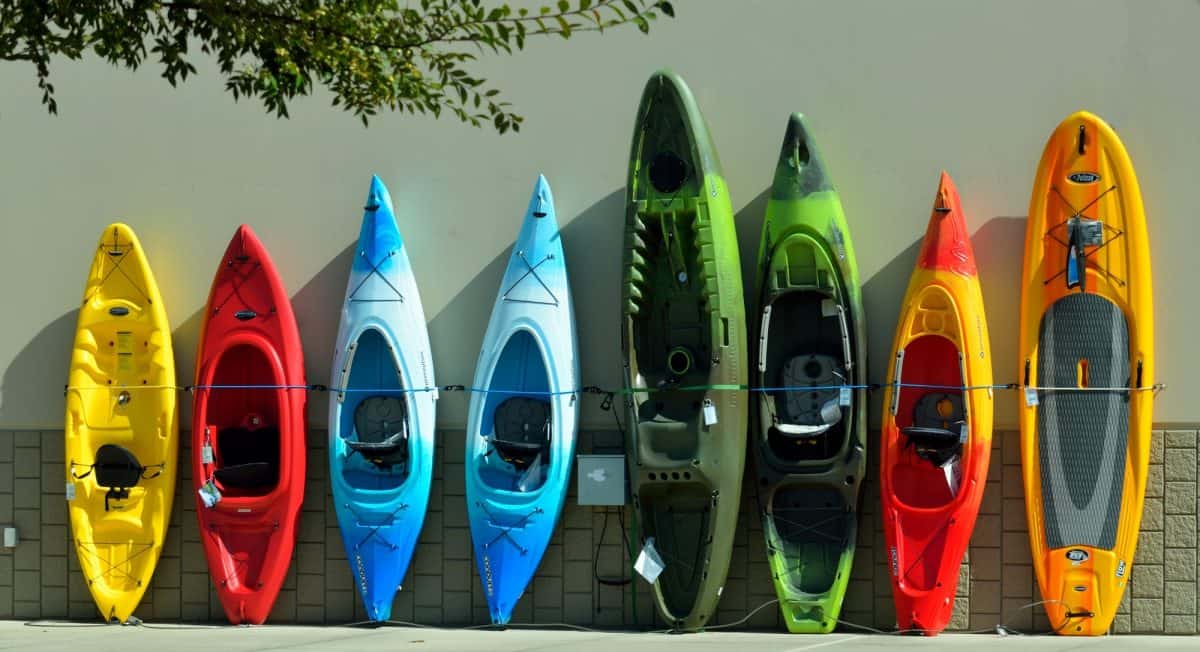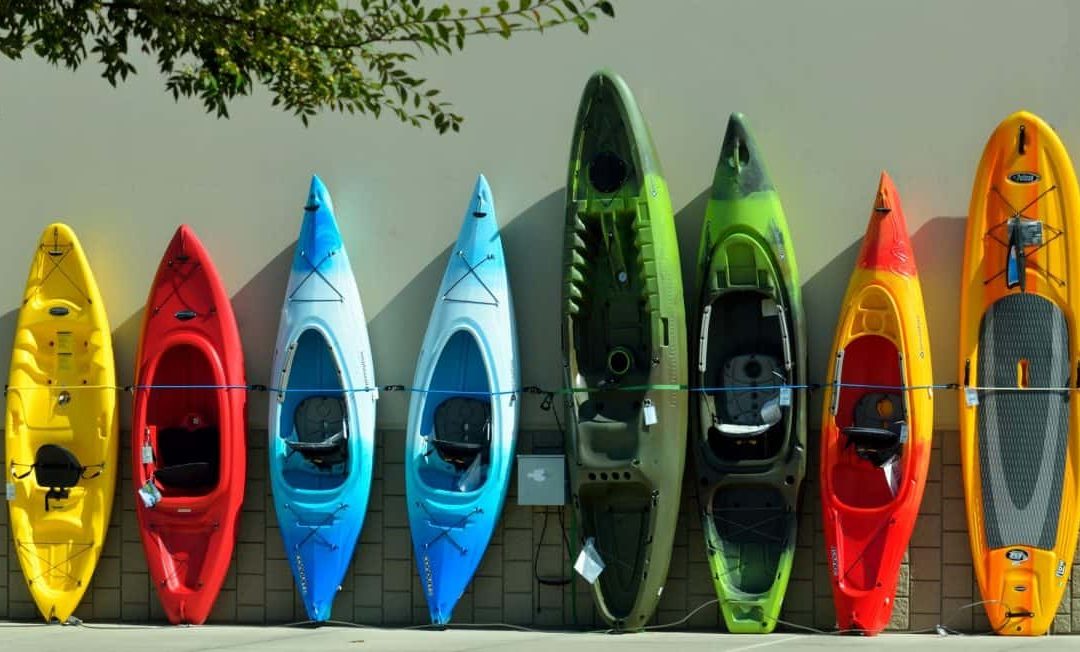A kayak is a boat designed for humans (and animals) who like to go out into the water. Kayaking is one of the most popular outdoor activities in the world. However, not all kayaks are created equal. Some kayaks are made for expert kayakers, while others are made for novices. This is especially important if you are buying a new kayak. In this post, we will discuss what you should consider when you are taking decision on how to choose a Kayak.

According To Weight capacity and budget
Consider this as an essential factor before buying a kayak. You may be considering purchasing a kayak that fits your Weight and budgeting easily. The Weight a kayak can hold Weight up to a limit only, and if that limit exceeds, guess what will happen? Yes, you can sink in water making fun of yourself.
The budget is important to decide before making the deal. You should consider whether you are buying a kayak for doing just fun or for professional sporting purposes.
Read more article here : how to choose a kayak
Length and width of the kayak
The length of your arms should determine the size of your kayak. If you have long arms, get a longer kayak. On the other hand, if you have short arms, get a shorter kayak. When sitting in your kayak, your knees should be just a little higher than your hips. Therefore, if your kayak is too long, you will be leaning forward with your arms extending past your knees. This will cause your center of gravity to be much higher than it needs to be. This makes your kayak very unstable and difficult to paddle.
A good rule of thumb is that your kayak should be long enough so that when you are sitting in it your knees are at or just a bit above the level of your hips. Also, make sure your kayak is wide enough, so you have room to move around in it. A common beginner’s mistake is to buy a kayak that is too wide for them (especially if they have long arms).
Different types of kayak’s hull design:-
According to Hull Design, There are several different types of hull designs for kayaks. The most common types are:
Round Hull:
A round hull is one of the safest and most stable hull designs. It is a trendy choice for new recreational kayakers because it is easy to learn to paddle and forgiving in making mistakes. However, around the hull is not the best choice for an advanced paddler seeking more remarkable performance. Rounds are great for beginners because they are easy to paddle, and they are safe. However, a round hull is not the best choice for an advanced paddler seeking more excellent performance. Rounds are great for beginners because they are easy to learn to paddle and are forgiving in making mistakes. However, a round hull is not the best choice for an advanced paddler seeking more outstanding performance. The Dory: A dory-hulled kayak is perfect for new recreational kayakers or for paddlers who want a forgiving, stable boat that will let them make lots of mistakes.
V-Shaped Kayak Hull:
V-shaped hulls are great for touring and long-distance trips. They are faster than round hulls and more maneuverable. However, they tend to roll over when hit from behind by another boat or when swamped by large waves. This makes them less than ideal for beginners or for recreational paddlers who don’t take their equipment seriously. Triangular Hull: These hulls are very popular with whitewater kayakers because they are the most maneuverable hull shapes.
They are also the fastest kayaks for flat water. However, they are not as forgiving as other hulls, so they are not good choices for recreational paddlers who do not take their equipment seriously. Deltana Hull: A Deltana hull is the best choice for an advanced paddler who wants the best of all worlds. It combines the performance of a V-hull with the stability and safety of a round hull. It is the best choice for an advanced paddler who wants the best of all worlds.
Flat Hull Kayak
(Also Known As a “Planing Hull”) Flat Hull: Flat-bottom boats have vast sides that run parallel to the water. They are very stable but slow and difficult to paddle. They are very forgiving in terms of making mistakes but unforgiving when it comes to flat-out speed. They are the best choice for touring or for recreational paddlers who don’t take their equipment seriously. The widest part of your flat-bottom kayak should be about 1-1/2 to 2 inches wider than your hips. This will give you plenty of room to move around in the boat while keeping the contact area between feet and the boat’s bottom to a minimum.

Where will you Use your Kayak?
Lakes
If you use your kayak for fun in the lake, you should consider buying a flat-bottom boat. They are very stable and forgiving in terms of making mistakes.
White water: Flat-bottom boats are not nearly as maneuverable as round-hulled boats, so they are not good choices for rivers that have lots of rocks, trees, etc.
Coasts
Flat-bottom boats are not nearly as fast as round-hulled boats, so they are not suitable for exploring remote coats or making long trips to distant points.
Read more article here : kayaking guide for beginners
Open Ocean: If you use your kayak for ocean exploration or just for sport fishing, then you should consider a V-hull or Deltana hull. They will give you more speed and a much better ride than a flat bottom. However, a V-hull will roll over if the wind gets too strong or the waves get too big. So keep these conditions in mind when you are choosing a boat. Also, be aware that wave action can cause the sides of a V-hulled boat to lift up, making it very difficult for you to get in and out of the boat.
Rivers
If you decide to use your kayak for fun on rivers, you will not need to spend any money on a special kind of craft. Any old touring kayak will do. But if you decide to explore remote areas or go whitewater rafting, you should consider a round-hulled boat. It will make things much easier for you. Coasts: If you decide to use your kayak for ocean exploration or just for sport fishing, then you should consider a V-hulled boat. It will give you more speed and a much better ride than a flat bottom. However, a V-hull will roll over if the wind gets too strong or the waves get too big. So keep these conditions in mind when you are choosing a boat.
Types of Kayak Paddles:
There are three main types of paddles used with a kayak. The shaft-mounted paddle: This is the paddle attached to the shaft, just like a bicycle crankarm. It has a long, narrow blade with a large section at the butt end, which fits your hand. Blade-mounted paddle: This type of paddle is held in hand with the shaft running up the middle of the blade.
As I have said many times before, the secret to a good kayak paddle is to have one that fits your hand correctly and allows you to make maximum leverage when you paddle. The blade-to-blade (or double-bladed) paddle: This type of paddle has two blades instead of one. Like the blade-mounted paddle, the shaft runs up the middle of the blade. However, the blades are connected by a crosspiece, so they move as one unit when paddle. This makes a blade-to-blade paddle much more efficient than a single-bladed paddle. The fourth type of paddle can be used with a sit-on-top kayak or a sea kayak, but it is seldom used with a touring kayak. Be precise always about the needs and features on how to choose a Kayak.


